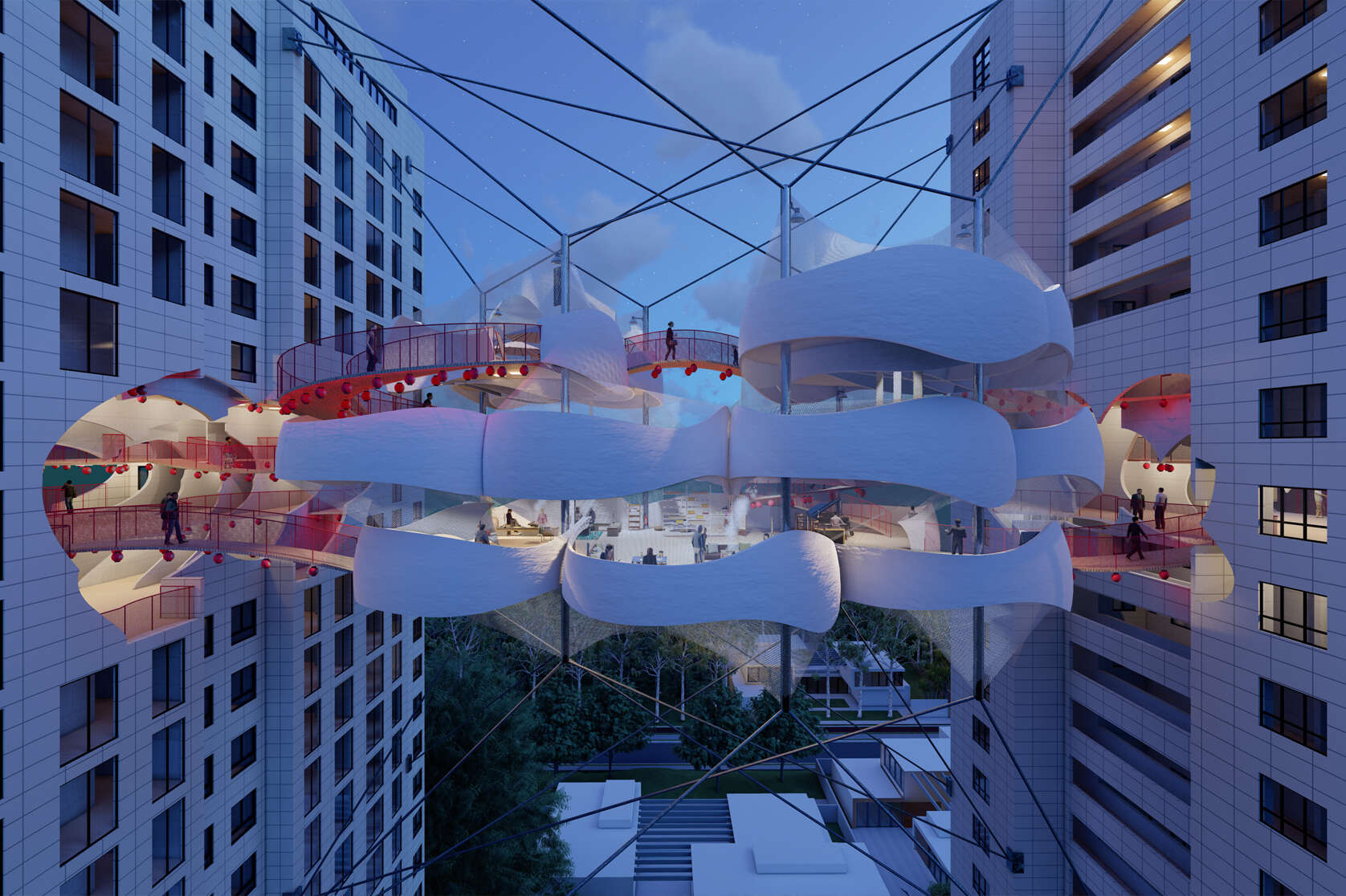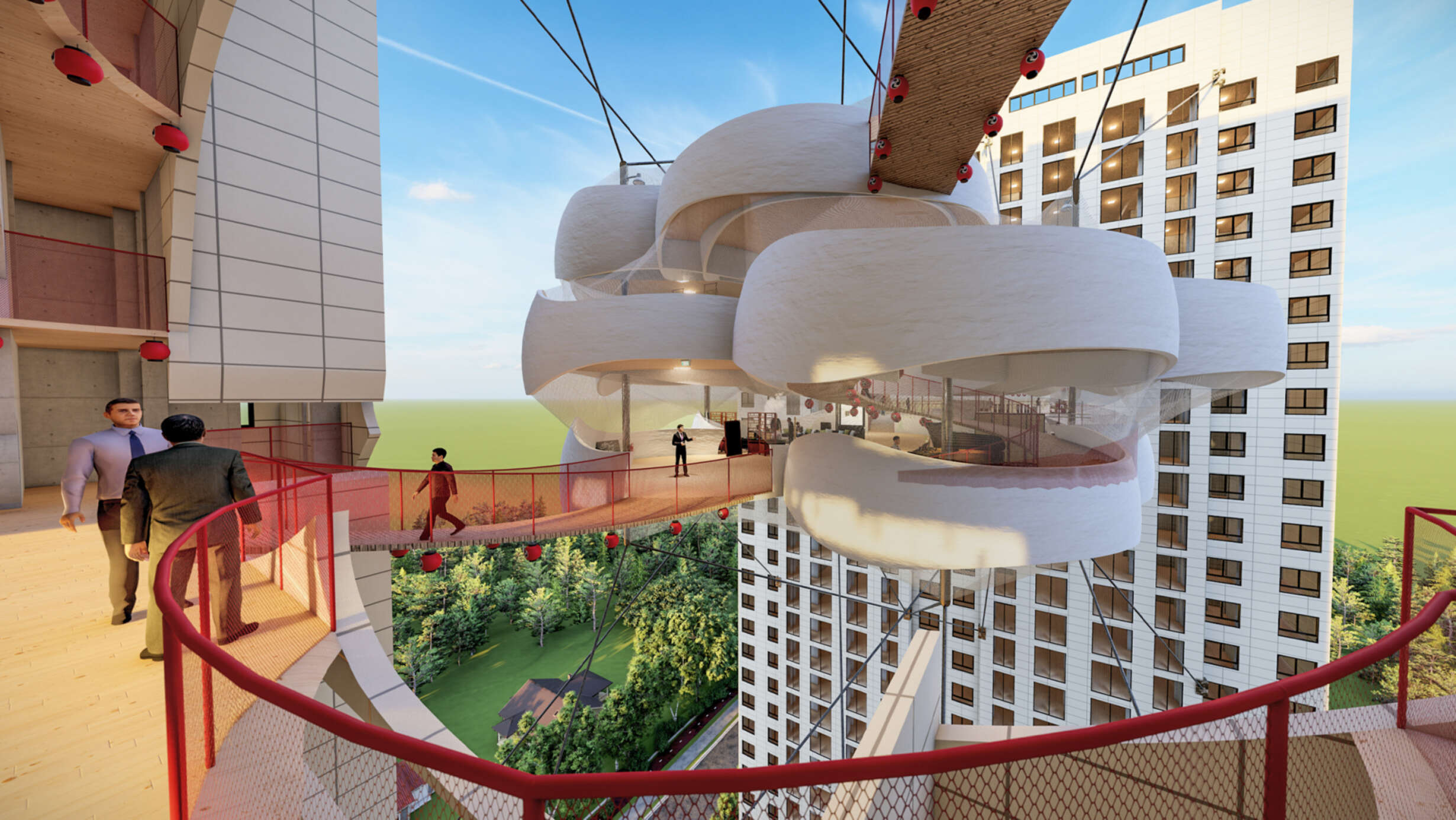In China, with the rapid increase in urban populations, residential construction is a large part of the urban development landscape. However, though rapid urbanisation brings convenience and more opportunities to people's lives, it also creates problems. In the sheer scale of delivery, Chinese residential buildings present a cookie-cutter sameness of typology that lacks a connection to its Chinese context. In high-rise residential buildings, there is a lack of personalised choices for the residents because of the nature of the buildings' construction; residents' living activities are limited to the interior and communication between people is blocked by cubicle after cubicle. Most towers, by the literal nature of their design, become a "Gated Community" which goes against the traditional Chinese conception of society. It also goes against the Chinese conception of space that takes the invisible as a metaphor for the visible, as a discourse between being and non-being.
Exacerbating this loss of community, the "Design Service Life of Building Structure" in China, decrees that residential buildings built before the 1970s have reached the end of their service life. This means that most houses will be demolished forcing the people who used to live here to move out, to meet urban renewal and development needs. This goes against the "Concept of Family" in Chinese society and erases the memories of these buildings from the long history of urban development.
In this thesis, I wanted to explore if there was a different approach. Could we create spaces that transform the living experience of these bland residential buildings that many people have to live in? Could we create spaces that allow another dimension to live in from a cellular apartment space? Creating space for the expansion of another dimension without affecting the existing dimension becomes this thesis's leading research direction. I will explore Zaha Hadid's early painting and paper architecture with traditional Chinese contexts for another way of looking at architectural space. I will combine my childhood memories with the film narrative to design and establish a utopian conjecture through different dimensions, creating a multi-dimensional parasitic architecture to see how I might improve people's experience in high-rise residential buildings.




















